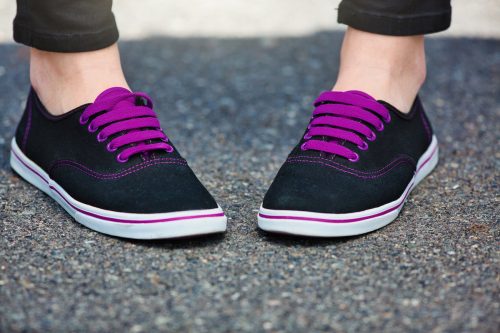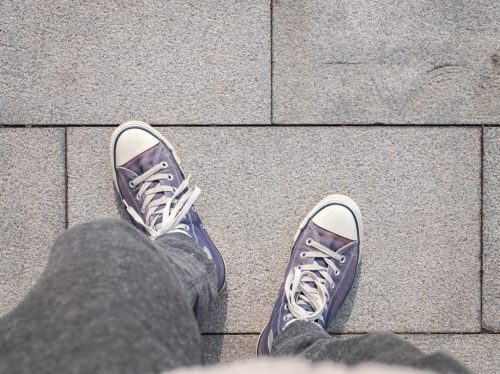6 Common Walking Habits That Destroy Your Body

There are too many benefits of walking to list, but cardiovascular fitness, weight loss, and decreased anxiety are a few of the biggest advantages. If you want to better your physical and mental health through walking, however, you’ll want to be sure you’re taking care of your body in the process. That’s why podiatrist Thien Trinh, founder of insole and sneaker company Stryda, recently shared the six common walking habits you’ll want to avoid. Keep reading to learn what not to do—and what to do instead.
RELATED: Silent Walking Is the Latest Wellness Trend Everyone’s Talking About.
1
Leaning backwards

This is one of those subtle habits that you might not even realize you’re doing, but leaning backward when walking means your body weight is working against you, shares Trinh in a video on his TikTok channel.
Instead, in a separate video, he recommends leaning slightly forward “because you’re using your weight as momentum.”
2
In-toeing

In-toeing is when a person walks with their foot angled inward. “A lot of kids do this; a lot of adults do it as well,” notes Trinh, who advises avoiding this as it “rotates your knee unfavorably.”
RELATED: Why Walking Only 3,867 Steps a Day Is All You Need, Science Says.
3
Out-toeing

You’ll also want to avoid walking with your feet angled outward, says Trinh. In another video on this topic, he explains that out-toeing “forces you to strike on the outside of your heel [which] sends a very angular force up into your knees, your hips, and your back.”
“On top of that, it actually cuts out the action of your butt muscles—your gluteal muscles—and over time, you will notice that your butt muscles become weaker,” he adds, noting that lower back pain might be the worst outcome of this walking habit.
He shares that it’s best to have your feet facing straight ahead, and when you take a step, push off through your big toe to activate your butt muscles.
4
Taking short steps

Trinh says taking short steps is very inefficient. “It’s very start-stop, and again, it means that your weight and flow of movement isn’t continuous,” he explains. He also points out that taking longer steps better engages your glute muscles.
RELATED: 8 Ways to Motivate Yourself to Take a Daily Walk.
5
Swinging your arms unevenly or not all

Your arm movements play a huge role in the efficacy of your walking routine, so you want to be sure you’re employing them correctly.
If you’re swinging your arms unevenly or not swinging them at all, it “creates all sorts of imbalances in your whole chain of movement—in your spine, in your hips, in your knees—because if you don’t swing your arms, you’re going to swing something else to compensate,” Trinh points out.
6
Crossing your midline

Trinh likens this walking style to that of a supermodel, where the feet cross over your body’s midline with each step. “It’s not good to put angular forces where they don’t belong,” he says.
According to Competitive Edge Physical Therapy, this is referred to as cross-over gait, and it can cause issues with your knees, hips, feet, shins, and Iliotibial (IT) band.
With all of these walking habits to avoid, Trinh notes that you shouldn’t panic if you catch yourself doing them once in a while. “But if you keep doing it, it’s probably not OK when you get to 40, 50, 80, 90 years of age,” he adds. “So, take care of that body, and use your walking as your tool to stay fit and healthy.”
And, of course, if you notice any pain or discomfort when walking, always first speak to your healthcare provider.
For more wellness advice sent directly to your inbox, sign up for our daily newsletter.